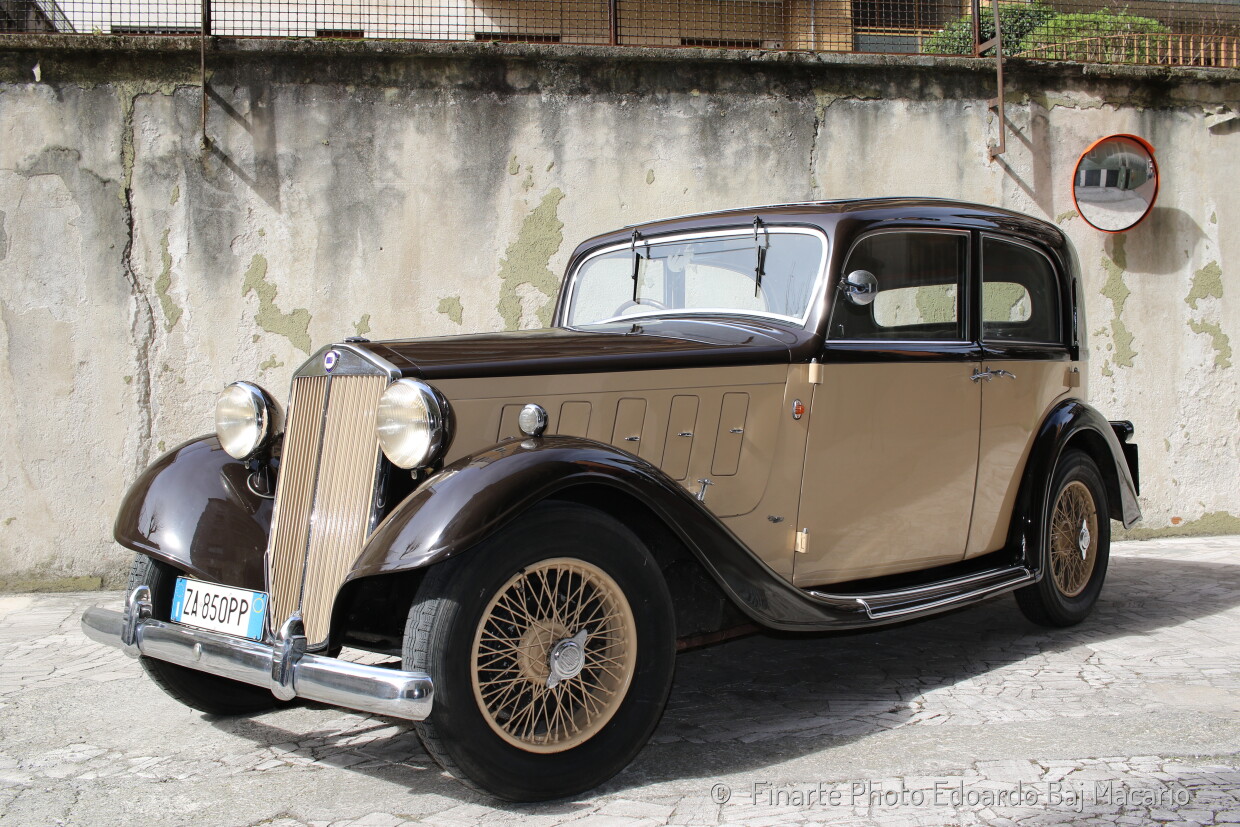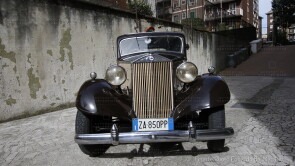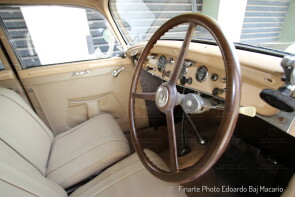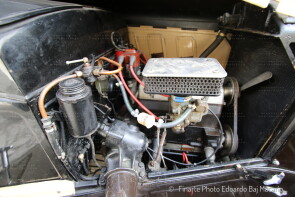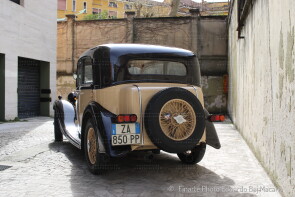
1934 Lancia Augusta Berlina
ON/OFF
Why am I an Automotive Masterpiece?
The Augusta was a product designed for that historical moment. The heir of the Lambda would have been big but what was needed was a small, inexpensive car which was nonetheless comfortable and fast: a sort of utility car (according to the canons of the time) but for the elite. The new car was designed with rear-hinged rear doors to facilitate accessibility, with central mass distribution with respect to the axles. The shape is narrow for easy handling, compensated by an increased height and large windows. The line is slender but classic, for everyone. It is quiet, fast and reliable. The Augusta was loved by contemporaries and then forgotten, with less sporting glories than other Lancias (with some notable exceptions) but leaving many memories in every family that had owned one. It was the first Lancia built on an assembly line and turned out to be the first truly modern designed vehicle, built by welding the sheets into a single non-deformable structure. In 1935 the Augusta represented 90% of Lancia's industrial activity, with excellent economic results. Its presentation took place in 1932 at, as was customary with Lancia, the Paris Motor Show. For the French market, the machine was called "Belna". When it was presented at the Salone di Milano in April 1933, the official name became Augusta, decidedly more important and "littorio". It featured many innovative or unusual features, such as the narrow V-cylinder engine, independent front suspension with helical springs, insertable freewheel, transmission with shaft and “Hardy” flexible couplings. The braking came from the new "Lockheed" hydraulic system. Even the trunk included in the body shape was a novelty. The dashboard was very complete by the standards of the time and category. Among those who admired the Augusta, buying and using it, were three famous driving champions: Tazio Nuvolari, Achille Varzi and Luigi Fagioli. The 1,195 cc and 35 hp V4 engine with overhead valves, according to surveys carried out by Autocar magazine, pushed the Augusta sedan to a top speed of 65.22 mph (104.96 km/h), accelerating from standstill to 50 mph (80.5 km/h) in 22.6 seconds. Although a sparkling performer, the Augusta was not designed for racing, although its palmarès remains appreciable. Confirmation of the success of the Augusta came in 1934, at the backbreaking 1st Giro automobilistico d'Italia or Coppa d'Oro del Littorio where the car, with practically no rivals in its category, endured hours on the limit of 100 km/h. It’s most important performance occured at the 1936 Targa Florio with 4 Lancia Augustas in the top 4. The Augusta also participated in the 1935 Mille Miglia with 10 cars and in 1937 with 5, exemplary results in that year, Vittorio Mazzonis of Pralafera and Enrico Nardi: 17th overall. In the early post-war years, some examples of the Augusta appeared in the races. In total 17,217 vehicles were manufactured, of which 2,950 in 1933. A year after the launch of the sedan, in 1934, the chassis was made available for custom-built cars. Distinguished by the prefix "34", while the standard cars have a chassis that starts with "31", the chassis is very light (just 570 kg), has a modern box structure and is very low, as it is equipped with a tunnel for the transmission. Compared to the complete car assembled in Lancia, the fuel tank with an electric pump is repositioned. The major Italian and foreign coachbuilders built sedans, cabriolets, coupés, spiders. The creations on Augusta were many and it is very difficult to catalogue them and, in some cases, to distinguish between them. Carrozzeria Viotti of Turin was active from 1921 to 1964 and is known for its "tailor-made" cars. In the 1920s it registered the patent for the "carrozzeria Clairalpax" which used thin nickel silver uprights for a significant increase in glass surfaces. The company is important in the history of the Italian automobile for having created, based on a design by Mario Revelli de Beaumont, the Fiat 1100 "Giardinetta" which in 1946 was an important step in the development of the modern station wagon.
The Lancia Augusta Berlina, chassis no. 341292 is an example from 1934 with coachwork by Viotti. It is believed to be unique, there being no known "twin" and it is certainly, the only surviving example. There are many particular details compared to the, very few, other Augustas with Viotti coachwork, an atelier which favoured formal elegance and aerodynamic resistance inspired by collaborations with Mario Ravelli di Beaumont. In the Lancia Augusta Berlina, chassis no. 341292, the proportions and the balance of the volumes is similar to that of the sedans built in Lancia, but the lines are visibly softer and more connected, great care was dedicated to the level of detail, which is only possible for a small atelier. The car has two-tone brown-beige paintwork, wire wheels, and a lighter colored grill. The interiors are in beige cloth with ton sur ton varnished wood finishes. In 2015 the car took part in the production of the film "Antonia" by director Ferdinando Cito Filomarino, on the life of the Milanese poet Antonia Pozzi; the film won a special mention at the Karlovy Vary International Film Festival and was candidated for the 2016 Silver Ribbon for best new director. The chassis no. 341292 had a first BO330826 license plate, later changed to MIG17394 license plate at the end of the 1960s (these plates are with the vehicle). Later it has been re-registered again with Italian plates. A complete and careful restoration was performed in 2000.
